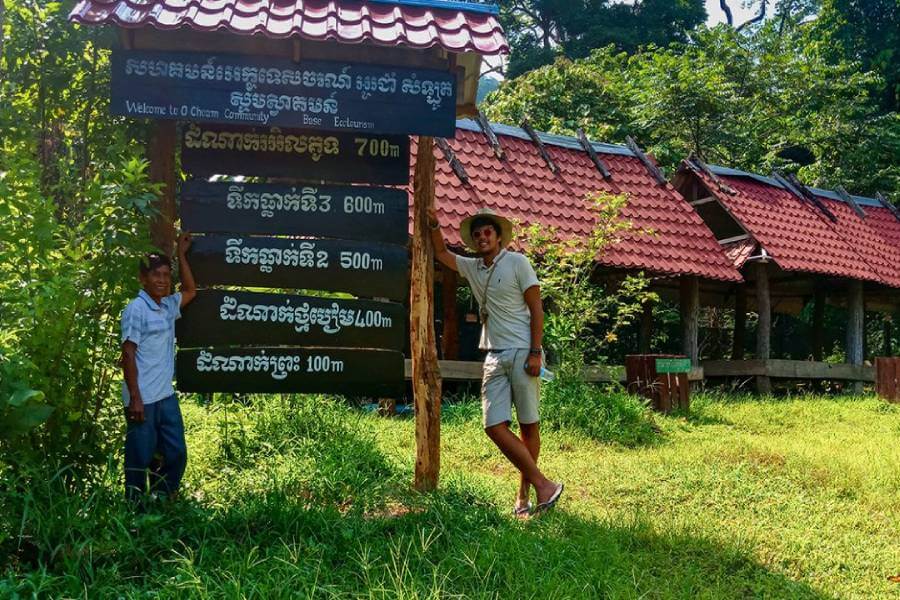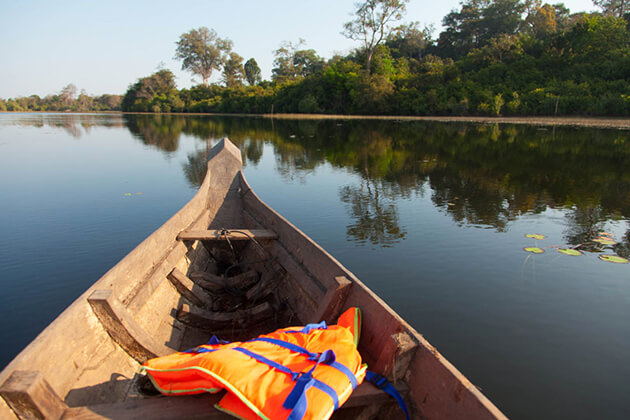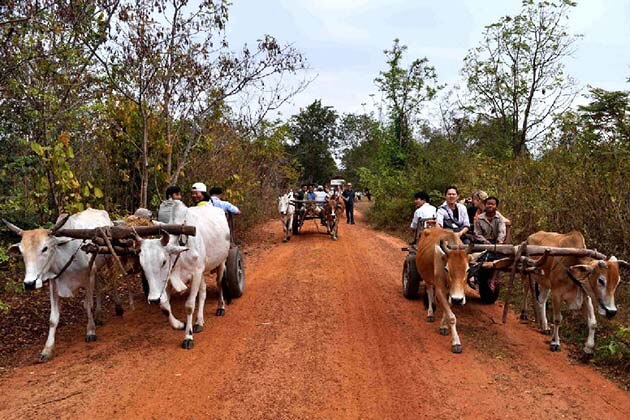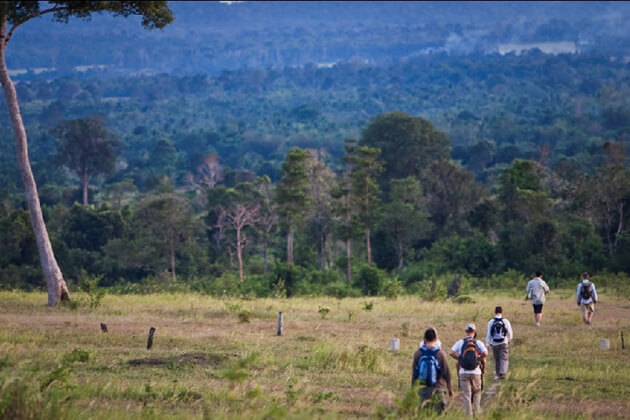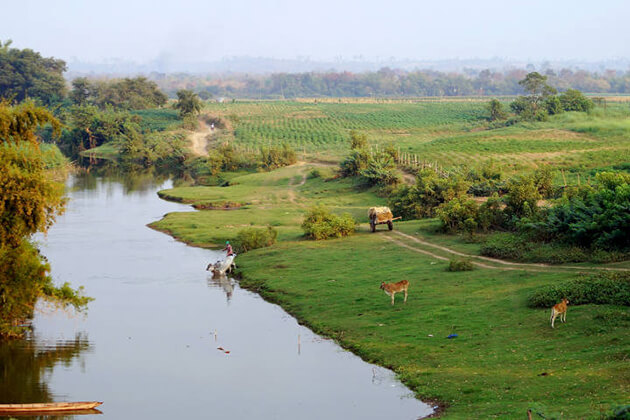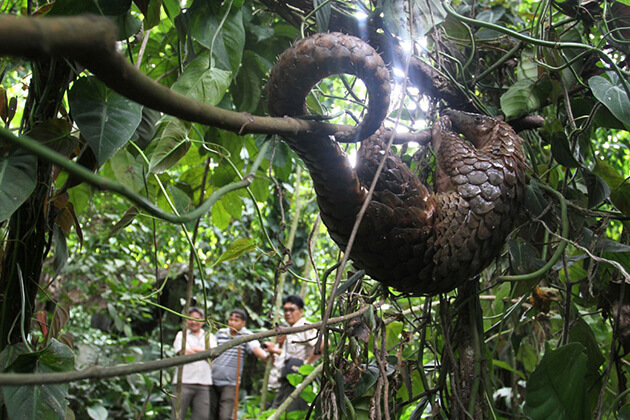If you have been traveling in the beautiful kingdom of Cambodia and have explored the most popular tourist attractions such as Angkor complex, Royal Palace, Prasat Preah Vihear Temple,... And now you want to discover more of Cambodia's new landscapes and customs, the ecotourism in the remote areas of Cambodia will be an interesting hint to experience.
The majority of ecotourism Cambodia sites are located in remote areas. So if you seek any kind of artificial entertainment by the villagers or a lot of action, most of the ecotourism sites here are the wrong places. But if you want to experience the very rural life in Cambodia, a life with a simple comfort that can be surprisingly good and calming, you should get to the following places. Far apart from modern society, you get an idea, how the daily life of the indigenous people in Cambodia can be like nowadays. Here are the top eco-tourism sites you can follow during your tour in Cambodia.
Contents
Reasmey Phum Piri Kiri Boeung Kranhak Ecotourism Site
Reaksmey Phoum Piri Kiri Boeung Kranhak Ecotourism Site is a place to visit if you are looking for locations unspoiled by tourism. This Ecotourism Site was established in 2014 and officially recognized by the Kampong Thom Provincial Governor in 2015. It lies within two officially‐designated community forests and consists of a beautiful natural lake surrounded by forest on the eastern shore, and covers an area of 193 hectares. Ecotourism is just starting in this area, so things are basic, but in exchange, you receive a genuine welcome from the local community. By the end of your stay, you will feel as if you have made life-long friends.
The Cambodian typically come to the lake with their families during national or local holidays and enjoy relaxing picnics along the shore or swimming and boating. International visitors are more likely to seek an authentic Cambodian homestay experience, combined with bird watching and forest walks to see wildlife, unique plant species, and historically important cultural sites. Because this site is relatively new and has had only a limited number of travelers. There is very limited English, but in exchange, guests get a “real” Cambodian experience.
Chambok Ecotourism Site
Chambok is one of the most well-known community-based ecotourism sites in Cambodia. It is a community of 9 rural villages where you can experience and learn about the typical daily life of Cambodian families. You can also explore the area’s beautiful natural surroundings. The community-based ecotourism project was established in 2002 to provide an additional income for the local people and help protect the surrounding forest. Since 2003, the Chambok community has protected 1,260 hectares of forest land from logging and hunting. The ecotourism project is managed by the villagers themselves, and all revenues from ecotourism stay in the community. It is a well-organized site with English speaking guides. It is an easy stop on your way from Phnom Penh to Sihanoukville.
Coming to Chambok, you will have a chance to experience waterfalls and forests, watch Wildlife including birds, monkeys, and fireflies which often appear during the evening; hike to waterfalls with a local guide; swim in the river and local streams; attend guided walks through the forest; cook lessons; experience traditional livelihoods and enjoy the rural Cambodian lifestyle.
Chi Phat Village - Cambodian Ecotourism
Chi Phat ecotourism site is one of the most well-known sites in Cambodia. There is plenty to choose from – and a wide range of activities and accommodation options. It is a great place to visit if you are looking for your first ecotour or traveling with children.
The commune consists of four villages: Chi-Phat, Komlos, Chom-Sla, and T’k La’o. Most of the local residents make their living mainly out of agriculture, fishing, and tourism. After 10 years of running the ecotourism project, the village is becoming more sustainable and is well known globally. In Chi Phat Village, you have an opportunity to trek in the forest, cycle – mountain bikes for hire, kayak Boat trips, discover the real peaceful Cambodia, visit waterfalls, walk through the Cardamon Mountains, experience traditional livelihoods and enjoy the remote Cambodian lifestyle.
Kratie Province - Rustic Cambodian Ecotourism Site
In Kratie, tourists can encounter critically-endangered Irrawaddy dolphins through Cambodian Rural Development (CRD) Tours. Visitors learn about the dolphins’ conservation, history, and characteristics during a half-day trip to the largest dolphin pool in the Mekong River, where Ibises and turtles can also be spotted.
Even closer to the capital, WA offers personalized behind-the-scenes tours at nearby Phnom Tamao Wildlife Rescue Centre, where visitors can interact with elephants, macaques, and sun and moon bears. “The tours provide guests with the rare opportunity to see Cambodia’s unique and endangered animals up close,” says Pollard. “They can take pride in knowing they are helping us keep wildlife in the wild, where it belongs.” (Extract from Asia Life Magazine/Joanna Mayhew).
Cardamom Mountains - Nature Cambodia Ecotourism Site
In Cambodia’s remote Areng Valley, tucked in Koh Kong’s Cardamom Mountains, the Wild KK Project hosts four-day tours encompassing mountain biking, kayaking, and trekking, topped off with camping atop cliffs or alongside the winding river. The project, an offshoot of grassroots environmental movement Mother Nature Cambodia, was started to help provide an alternative income source to the valley’s approximately 1,300 indigenous people, and to raise awareness about the beauty and vulnerability of the area, under threat from a long-proposed hydropower dam.
Home to some of the world’s last remaining Siamese crocodiles, the biodiverse area also boasts 30 other endangered species, with guests able to spot green pit vipers, hornbills, dragonfish, and slow lorises. “It’s the chance to see Cambodia in its most raw form,” says ex-pat Amy Collins, who joined the tour in May, adding the most rewarding aspects were experiencing village life and learning about the local culture. “I would recommend it to anyone willing to risk comfort for an amazing chance to see an untouched part of Cambodia.”


